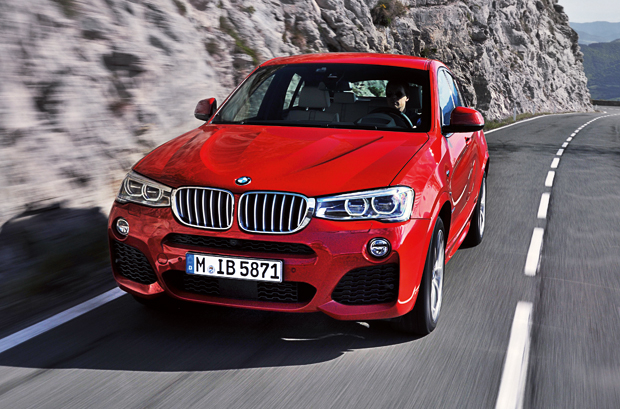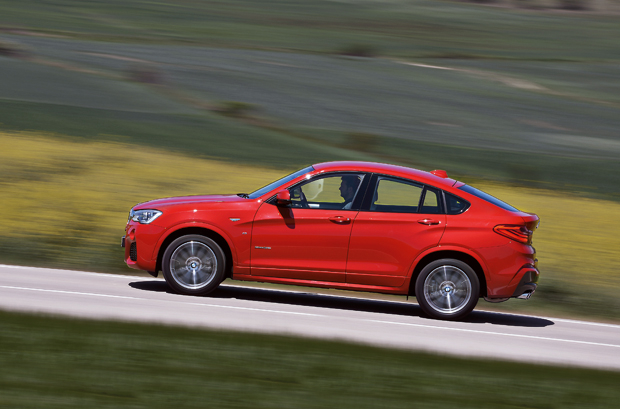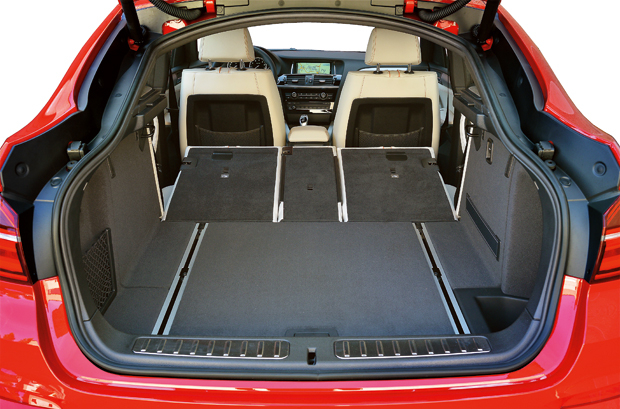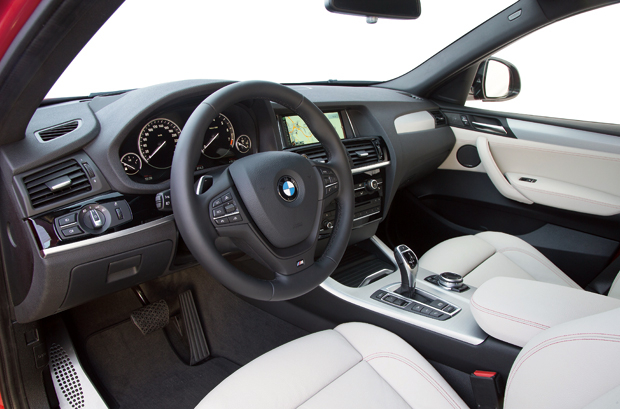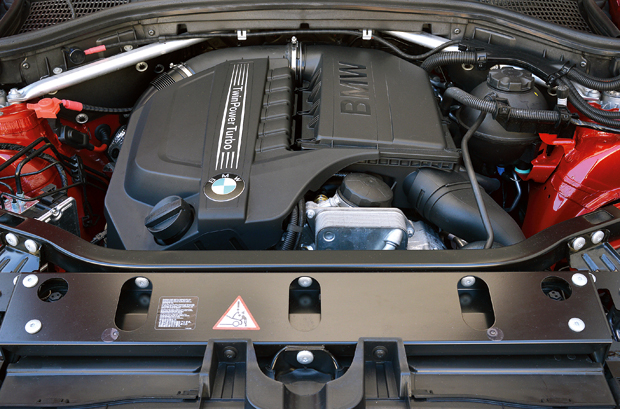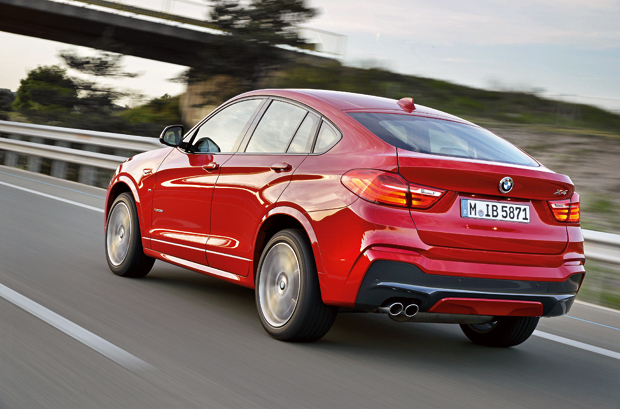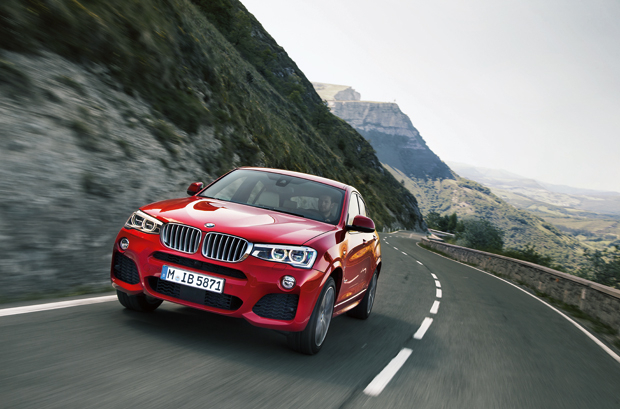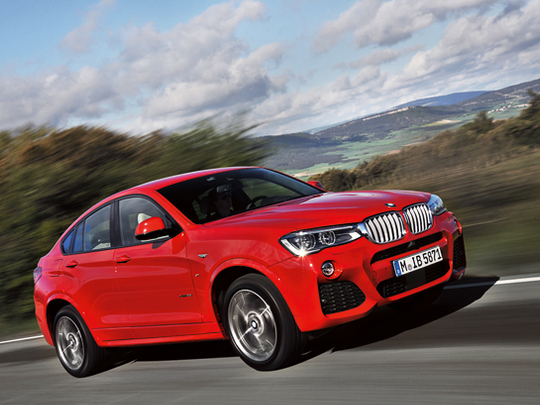
Lest we all be shocked and dismayed at the launch of a divisive new X model, BMW showed its hand early. A sheet was pulled off the Concept X4 early in 2013 at Auto Shanghai, and while its sportier design and proportions met with a largely favourable response, many wondered why it existed at all. Sure, the BMW X6 has proved the original doubters wrong by notching up more than a quarter of a million sales since its arrival in 2008, but is there really room in the BMW line-up for a baby X6? Or a sportier X3, depending on how you look at it. Remember, the X3 can be had in a fairly sporty specification depending on which boxes you tick on the order form.
If the German company had revealed the X4 before 2011 we’d not have been so receptive to the idea. Why? Because that’s the year the Range Rover Evoque arrived on the scene, immediately creating a new class of SUV, one in which sportiness, image and desirability have very little to do with size or, relatively speaking, purchase price. There are many people out there who would, right now, opt for the Evoque over its big brother, the Range Rover Sport, even though they can afford the latter. Clearly BMW isn’t expecting its X5 prospects to consider the X4, but it certainly is hoping to stop existing drivers of, say, the X3 from defecting to the nearest Land Rover dealership.
And obviously the X3 is the starting point for the new BMW X4. Up front there’s not a lot to tell them apart, especially as the X3 has come in for a facelift at the same time. Sure, BMW will point out the movement of various elements, such as the air intakes and fog lights, to give the X4 a more dynamic and aggressive appearance, but the family resemblance is strong so it could easily be mistaken for an X3 in M Sport guise. That changes markedly as you move around the side, the X4’s most appealing view. The roofline drops away dramatically from the windscreen and it’s complemented by a subtly rising window line and a not-so-restrained flourish in the rear haunches. It’s quite muscular, highly distinctive and, yes, it divides opinion, but works from this view if you ask us.
Sadly, we found the rear deck too high, giving the designers a lot to do in hiding its bulk at the back. Perversely, that’s worsened in the M Sport car as most of the bodywork is the same colour, whereas black and silver accents define other variants in the range. In the end we concluded that, while the X4 is undoubtedly sportier looking than the X3, it’s just not as well resolved a design as the BMW X6 — and that’s not a sentence we ever imagined using.
That rear end is set high for good practical reasons, of course. Boot space (accessed via an electric tailgate) is just 50 litres less than the X3’s at 500 litres with all seats in use, which isn’t too much of a compromise — and the split-fold seat is retained. Saying that, the X4 holds a more significant 200 litres less than the X3 when the rear seats of both are folded. Still, if that’s really an issue, the X4 is not for you. Get into the back seats and you’ll find that, despite ostensibly seating three occupants, the outer edges of the chairs are heavily bolstered for greater lateral support. And headroom isn’t as poor as the plunging roofline might suggest it will be, as BMW has lowered the seating position for all passengers — in a bid to offset the fact that the roof is considerably lower overall. Despite all that the X4 still feels like an SUV with a relatively commanding view out over ordinary cars.
Obviously the buyer of this car will only be worried about his own seat up front, and as ever with BMW the cabin is a paragon of quality, fit and finish, especially in M Sport guise as tested. The X4 has the latest set of BMW tactile switchgear and we can’t fault it for ease of use or quality. Even the gearchange paddles, often overlooked by other car makers, are a delight to use. We do have one bugbear though: the steering wheel is just plain ugly. Sure it has an ‘M’ badge on it and its stitched soft leather is a delight to hold, but buyers of the likes of an M Sport specified 4 Series get a much better-looking design — and just as tactile. Odd.
So what happens when you turn this wheel, enthusiastically? The X4 goes where it’s asked of course. At seemingly whatever speed you choose. Covering ground at eye-watering pace without putting a tyre tread out of place is this car’s strength. Engagement with the driver is not. However, that’s not necessarily a criticism. After all, even though the test car was the range-topping X4 xDrive35i model, it’s not purporting to be a full-on BMW M car, is it? Keep that in mind and most will accept the X4’s talents.
And talent it has in spades. The BMW X3 is no land yacht when it comes to cornering, but the X4 tangibly takes it all to a new level. Body roll, even in the softest setting of the adaptive damping system, is non-existent. Grip from the wide low-profile tyres is, as they say, limpet-like. Arrive at a corner too quickly, stand on the big brakes, turn in hoping for the best... and it just obeys your command. Get a little cocky by applying full throttle before the exit of the curve is visible and the car kind of shimmies as it divides the power up between the four wheels, but it still follows your original trajectory and just accelerates away. Quickly. Try harder to unstick the tyres and you’ll do well to get a distant chirrup before you lose your bottle. The X4 does it all with ruthless efficiency. Whisper it, but the Evoque will appeal to those who value engagement more than outright ability.
But Land Rover doesn’t make an engine like BMW’s well-proven turbocharged six-cylinder unit, and it has nothing to prove in this installation, though its partnership with the eight-speed automatic gearbox is one of the highlights of this particular car. The engine sounds good, and despite having a veritable leviathan to carry around, posts a very respectable 5.5sec 0-100kph time.
When you’re testing that for yourself and everything is switched into Sport Plus mode the gears are hammered home incredibly rapidly, with a modicum of violence that just adds to the experience. Response to the paddles shifts is instantaneous and the automatic gratuitous throttle blips are to be relished when changing down through the gears on deceleration.
Back in the reality of everyday driving, leave the transmission to its own devices and it slurs between ratios in an imperceptible manner, changing up early to make more use of the engine’s torque reserves at low revs in an attempt to save fuel. And even in this guise the X4 is deceptively quick. After all, that 400Nm of maximum torque is produced all the way from 1,200- to 5,000rpm so you could get yourself up to licence-losing speeds without trying too hard.
If none of this matters and you just want the baby-X6 appearance and image, then there are less expensive options in the line-up, including the xDrive20i and xDrive28i. They’re both powered by rather less melodic turbocharged four-cylinder engines, putting out 184 and 245bhp respectively. The xDrive28i should do well in these parts, as it still comes with a performance worthy of the sportier looks, but without quite the same outlay or running costs of the range-topper. Will there be an X4M? BMW remains tight-lipped on the subject, but we fully expect it. No doubt the blow will be softened by a ‘concept’ version in the near future.


